Chianina Characteristics
Here is a guideline to key characteristics of a Chianina.
Full details can be found in the Chianina South Africa Manual

Mature bulls
Mature bulls stand 1.8-meters to 2-meters in height and can exceed 1,600kg in weight. Males standing over 1.51m at 12 months are considered top-grade.
Avg. height of a bull:
1.8m – 2m
Avg. weight of a bull:
1,500kg – 1,600kg

Cows & Calves
Cows typically weigh 800 - 900kg, but they can exceed 1,000kg. Cows that stand over 1.65m are judged top-grade. Calves weigh around 45-50kg and can easily pick up about 2kg per day before reaching full-size.
Avg. height of a cow:
1.6m
Avg. weight of a cow:
800kg – 900kg
MANTLE
Porcelain white. Shades of grey spread over the front part of the body may also be seen.
PIGMENTATION
Black pigmentation should be seen on the following parts:

Eyelashes

Edges of eyelids

Oral mucosa

Peri vulvar

Perianal region

Switch

Base of the scrotum

Sheath hair

Muzzle

Hooves

Tips of horns
SKIN
The fine quality of the dermas has a notable effect on the commercial value of the carcass. It ensures proper temperature regulation. The dewlap and the sheath are extremely light, the neck is furrowed by numerous vertical folds that show how fine the skin is.


HEAD
The head is the expression of this breed.

Light, distinctive, expressive with a straight frontonasal profile, wide muzzle and lively eyes.
Short horns that are thin and have an elliptical cross-section, pointing laterally and forward.
A straight profile and a taut skin, as well as well-developed masseters, broad and well-shaped muzzle.
Lively and attentive black eyes.
Broad ears with long fine hairs, set horizontally.


NECK

The neck is short, strong and muscular (never slender), with marked gibbosity in bulls, and full of fine cutaneous folds.
The bulls have a gibbus that highlights their masculinity.
The dewlap is light and never overly pronounced or loose.
SHOULDER

Broad, muscular and set closely to the trunk, parallel to the median sagittal plane and properly angled.
The shoulders must be wide and be set closely to the trunk.
It should form an angle that has a proper opening (115-120°) with respect to the humerus.
WITHERS

Broad and muscular, and joined continuously to the back.
BACK

Long, broad and muscular.
This muscle supplies first-quality cuts and should therefore highlight the presence of muscle tissue as much as possible, revealing double convexity.


LOINS

The loins must be muscular, thick, broad, long and have a straight lumbodorsal line. It should be well-attached to the back and the rump.
The lumbodorsal line should be horizontal or inclined slightly in a front to back direction and must give the animal an impression of power and skeletal strength.
This region supplies first-quality cuts: fillet and sirloin.
CHEST

The chest must be broad, muscular, sloping, and convex.
It must be ample and powerful – the breadth of the chest helps to increase the thoracic capacity.
THORAX

The thorax must be broad and deep.
The height must at least be equal to the distance from the sternum to the ground, with well-arched sides.
This area represents an important index of constitutional strength.
ABDOMEN

The abdomen must be broad and well-supported.
FLANKS

The flanks must be full and well-connected with the surrounding areas.
They express development of the abdomen and must therefore be broad, without any relaxation of the coat or of the abdominal muscles.
The lower line must be virtually rectilinear and parallel to the upper line.
RUMP

Very muscular, well-developed, and broad in length and width, horizontal or slightly inclined from front to back with a clean tail head.
The rump should be very muscular since it supplies first-quality cuts.
A broad rump facilitates calving.
An ideal rump is not perfectly level – it should be inclined slightly towards the pin bones.
Pay special attention to the insertion point of the tail and the sacrum, a defect that is common in this breed.
THIGHS

The thighs must be thick and convex in shape, with accentuated muscular development.
BUTTOCKS

The buttocks must have a noticeable convex profile.
It is extremely important that these areas express development of muscle mass in a very evident way, as it is the basis of first-quality cuts.

FORELEGS

Proper perpendicular, muscular arms and forearms.
The forelegs must be perfectly perpendicular and must be set on strong solid hooves.
The shin must show fine boned features.

HIND LEGS

Proper perpendicular, muscular leg, lean strong hocks, solid and light shin.
The hind legs must be strong.
There must not be flaws and tendons must be highly visible.
The shin of the hind legs must also be fine boned.

FEET

The feet must be strong and have a very compact hoof.
The heel must be high.
The pastern must be strong, short, and pointed in the right direction.

UDDER

The udder must be well-developed, vascularised, and broad-based with regular quarters.
It should feel spongy and should consist of well-directed teats that are a suitable size for suckling.
The shape of the udder and teats must not give rise to frequent pathological and traumatic problems.
TESTICLES
Testicles must be well-proportioned and developed, descending into the scrotum.
We urge new buyers to always ensure of the correct documentation and to contact Chianina South Africa Interest Group or Studbook for any information regarding Registration Certificates.

